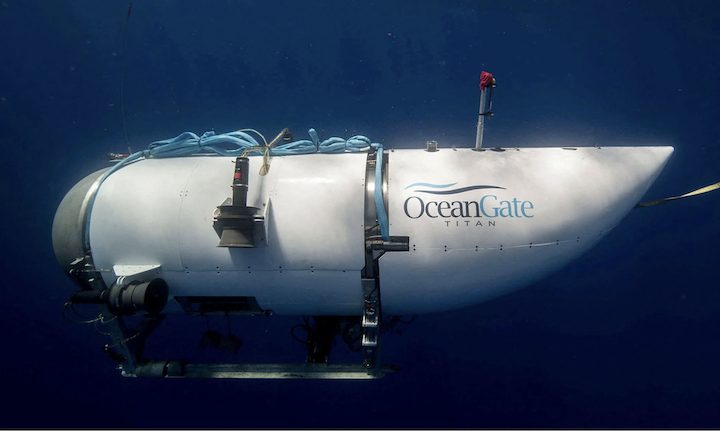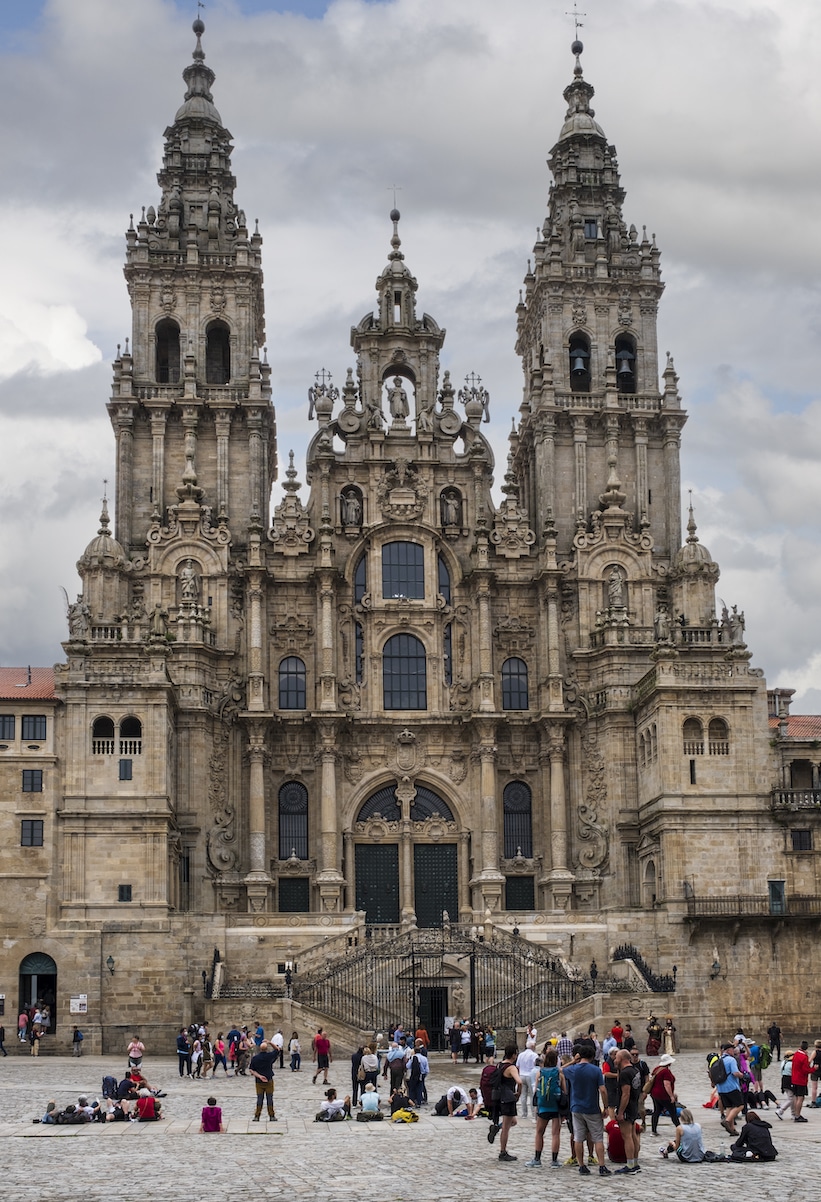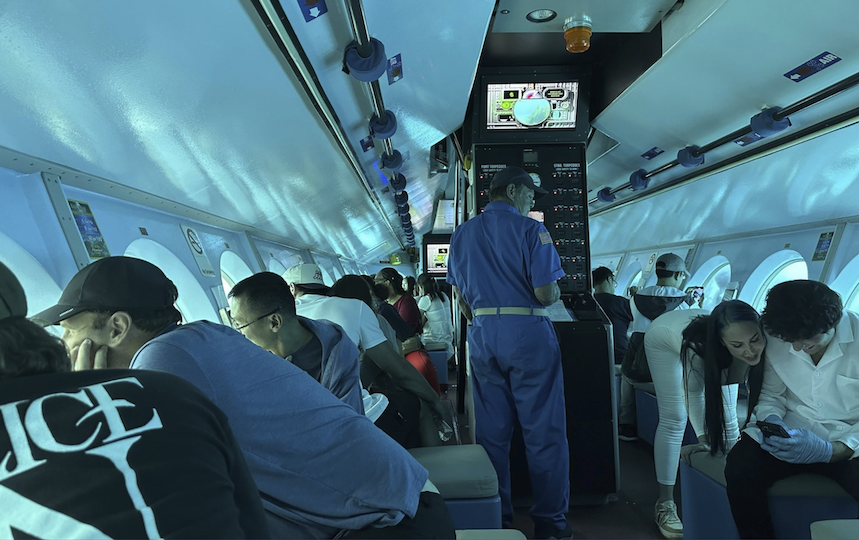
Titan, a 21-ft. submarine operated by Ocean Gate Expeditions since 2021, imploded about 900 miles east of Cape Cod, Mass. Designed to ferry “citizen explorers” able to afford the $250,000 to the wreck of the Titanic, the sub made it to within 500 yards of the ship before succumbing to pressures 400 times greater than on the ocean surface.
By John Poimiroo
World attention remains focused on the ill-fated voyage of the deep-sea submersible Titan, a tear-drop-shaped submarine that imploded during a voyage to the wreck of the HMS Titanic. Due to the tragedy, the world learned of the dangers of a new form of tourism called “undersea tourism.”
Who knew there was a waiting list of “undersea tourists” willing to pay $250,000 for a seven-hour ride to the bottom of the ocean?
The instantaneous death of five travelers brings to mind Ariel’s soliloquy describing a watery grave in Shakespeare’s The Tempest:
Full fathom five thy father lies;
Of his bones are coral made;
Those are pearls that were his eyes:
Nothing from him that doth fade
But doth suffer a sea change
Into something rich and strange.
It’s doubtful Shakespeare’s poetic belief in death leading to rebirth will comfort the relatives of those who died.
Wide World of Travel
Undersea tourism is one of many new forms of travel. The 2010 film Eat Pray Love starring Julia Roberts edified how travel has changed. Roberts portrayed a middle-aged woman’s gastronomic, spiritual and romantic journey through Italy. We used to travel for restoration, reunion or recreation. Today, we travel to eat, pray and love.
Indeed, tourism today has morphed into a variety of ways to travel. There’s even an online resource, the Travel Industry Dictionary, that describes these niche forms of traveling. The most commonly traveled isms are ecotourism, cultural tourism and adventure tourism. The first, ecotourism, is both a type of trip and a way of traveling that consciously minimizes environmental impact. Often, it is to unspoiled, natural destinations. You might call it “green tourism,” but “responsible tourism” and “sustainable tourism” beat you to it.
Responsible tourism tends to place the responsibility on the traveler and sustainable tourism places it on the destination. “Cultural tourism,” which is travel to a place for arts or history or to immerse oneself in its language, society or culture, is also called heritage tourism when focused only on history and culture. “Geotourism,” coined by the National Geographic Society, is the combination of cultural tourism, ecotourism and nature-based tourism in responsible and sustainable ways.
Confused yet? So, why is there both ecotourism and nature-based tourism? Well, the former is about responsible nature travel, while nature-based tourism focuses on nature viewing, though not necessarily conserving it. It doesn’t mean the trip is irresponsible, only that it is focused on viewing nature. In a way, that’s why so many tourism isms exist… to define the subtle differences between styles of niche travel.

Pilgrims rest in the Plaza de Obradoiro in front of the West Facade of the Cathedral of Santiago de Compostela. Photo by Charles Cecil
Tourism Sliced & Diced
“Adventure tourism” is a trip involving soft to risky adventure, often to exotic locations. Combine ecotourism with adventure tourism and you have “active tourism.” I can hear the complaints, now, “That’s taking this ism stuff too far! What was wrong with just adventure tourism or geotourism?’” There is no easy answer to this, other than to say some tour operators wanted to differentiate their adventure tour from others by claiming it was conducted more responsibly and the term stuck.
Evolved from environmental awareness has been the term “over tourism” which really isn’t a way to travel, but the effect of too much tourism. It’s the rising tide of tourists visiting easily overwhelmed places like Venice and California’s Lake Tahoe.
Religious pilgrimages were perhaps the first travel ism. Religious tourism has existed for millennia. Among the places travelers visit are Mecca, the Vatican, Bodh Gaya, the California missions, Salt Styageaha, Fatima, Göbekli Tepe, Moffat Mission, Lourdes, the Cathedral of Santiago de Compostela, St. Patrick’s Footsteps, the Mormon Pioneer Trail, and Canterbury Cathedral.
In the Middle East, the Guardian reports, there’s halal tourism defined by prayer, separation of male and female travelers and respect for the religious traditions of the faithful.
“Fortification tourism” is travel to see castles, forts, walled cities and other fortified sites. “Health” and “medical tourism” are travel for medical treatment. “Inclusive tourism” is travel designed for people with disabilities. “Sports tourism” is travel to spring training, to ballparks, to the Olympics and other sporting events. “Voluntourism” is travel for the purpose of donating one’s hard labor to a worthy cause or place. “Party tourism” is a trip to imbibe and participate in party antics. Think spring break.

The Wilson’s Creek National Battlefield outside Springfield, Missouri preserves the location of the first battle of the Civil War to occur in Missouri. The Confederacy won that skirmish but lost the war. Photo by John Poimiroo
Whistling Past the Graveyards
“Disaster tourism” is travel to the sites of natural disasters, often for voyeuristic reasons. “Weather tourism” is travel to experience blizzards, extreme heat, major storms and to chase tornados. Other voyeuristic isms include “dark tourism,” and “grief tourism,” that focus on places where horrific events occurred, such as crime scenes, places of mass tragedy, cemeteries and ghost tours.

You don’t have to be rich and famous to rise from the dead at the Mt. Pisgah Cemetery in Cripple Creek, Colorado. Even miners and their wives can tell their stories if their deaths were historically significant. Photo by David DeVoss
In Cripple Creek, Colorado, the town undertaker leads graveyard tours as locals dressed in period clothing rise from the dead. Tourists get to meet the spirit of Dr. Quinn Medicine Woman and no end of buried miners. In the late 1800s, men, women and children died every day from mine accidents, labor disputes, disease, floods, lawlessness, fires and gunfights. It’s said a murder occurred daily there, earning Cripple Creek the title, “The most haunted town in America.”
At the bizarre end of tourism’s isms are “shock” or “extreme tourism,” which include high-risk travel to dangerous places. Think hiking in Afghanistan, sightseeing in Haiti or visiting the Orthodox Christian cathedrals of Ukraine. “Narco-tourism” is travel to places where drugs illegal at home can be used legally. Sadly, one does not even have to leave the U.S. to experience narco tourism.

Faizabad, the capital of Afghanistan’s Badakhshan province, is ready to welcome tourists. The city’s Information Center is short of brochures and regrets it has no maps to distribute. Photo by David DeVoss
However, the ism that takes the cake is “debaucherism,” described by Gridskipper, a blog for urban travelers, as, “traveling to blow tons of cash, ingest pharmacologically inadvisable substances, and have sex with people whose last and first names are unknown to you.” They should have lumped these all under the term “dumb and dumber tourism.”
Most of us prefer “passive tourism.” That’s the act of skipping active participation for observation only, as in whale watching. Passive tourists sound inactive, but they represent the time-honored class of “sightseers.” However, it’s no longer fashionable to go sightseeing. Instead, travelers participate in new isms, like “ghetto tourism.”
This came about after Scandinavian visitors who’d seen motion picture depictions of America’s inner cities, sought out neighborhoods, such as Harlem, for their music and scene. At face value, ghetto tourism might seem gawkish or insulting, but what happened is that locals took hold of it as a means of attracting tourist spending into their communities.
LA’s Heart of Darkness
One of these ghetto tour operators, LA Gang Tours, says it uses, “the profits from the tours to create jobs and provide opportunities for the residents of South Central, Los Angeles. We believe that educating people from around the world about the Los Angeles inner city lifestyle, gang involvement and solutions is a vital step towards a peaceful existence.”
In Los Angeles, LA Hood Life Tours takes tourists to South Central, Compton, Watts and The Projects, while riding in a “discrete, blacked out, bulletproof SUV.” The tour company’s motto is, “This ain’t Hollywood, this is real life.” Ghetto enough for you?
Heading the opposite direction is diaspora tourism, in which immigrants return to their home countries or succeeding generations seek to find their “roots.”
Farmlands have their own form of tourism, though one far less edgy. It is the “agritourism” to be experienced in apple orchards and wineries. Agritourism is the convergence of tourism with certified farmers’ markets, corn mazes, farm stays, wine tasting, farm trails, guest ranches and any other agricultural activity.
Money Gets You Everywhere

Tourists peer out the portholes of the Nautilus, a 65-ft. semi-submersible that offers 45-minute trips to three spots off Santa Catalina’s Descanso Beach to see ocean life and ship wrecks. Photo courtesy of Catalina Adventure Tours
If you travel with no apparent means of financial support and at the lowest possible cost, you experience what has been termed “vagabonding.” And, if you travel constantly, then you are participating in “perpetual tourism.” Yes, it’s actually called that.
“Space tourism” is jetting travelers to boldly go where “few” men have gone or can afford to go.
Richard Branson’s Virgin Galactic has carried its first paying customers to the edge of space at $450,000 a pop. Elon Musk’s SpaceX has signed 82-year-old Dennis Tito to be the first space tourist to fly around the moon at a reported $20 million. And Jeff Bezos’ Blue Origin has completed six suborbital flights carrying space tourists, including Star Trek’s William Shatner, 62 miles above Earth, but didn’t orbit. The out-of-this-world price for this trip was $200,000 to $300,000 (Shatner got to go for free – Well, he is Captain Kirk). To go into orbit on Blue Origin, plan to pay $50 to $100 million.
Adventurous souls with money can still skim the edge of the stratosphere or plummet to the ocean floor. But safer, less expensive trips underwater can be found in places like Honolulu and Santa Catalina Island where moderately-priced semi-submersibles offer views of ocean life children of all ages will love.![]()
John Poimiroo is a travel writer/photographer living in California’s Sierra Nevada near Sacramento. He is the author of two previously published EWNS stories on cycling,

